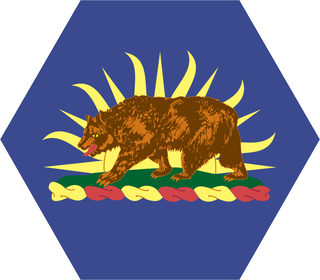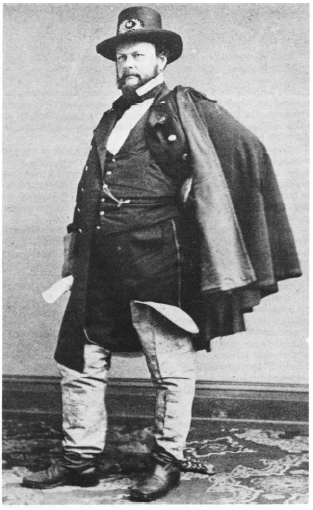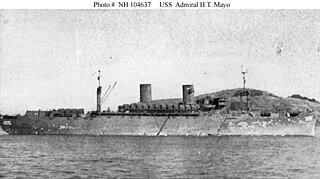Related Research Articles

The Admiralty was a department of the Government of the United Kingdom responsible for the command of the Royal Navy until 1964, historically under its titular head, the Lord High Admiral – one of the Great Officers of State. For much of its history, from the early 18th century until its abolition, the role of the Lord High Admiral was almost invariably put "in commission" and exercised by the Lords Commissioner of the Admiralty, who sat on the governing Board of Admiralty, rather than by a single person. The Admiralty was replaced by the Admiralty Board in 1964, as part of the reforms that created the Ministry of Defence and its Navy Department.

The United States Army Corps of Engineers (USACE) is the military engineering branch of the United States Army. A direct reporting unit (DRU), it has three primary mission areas: Engineer Regiment, military construction, and civil works. USACE has 37,000 civilian and military personnel, making it one of the world's largest public engineering, design, and construction management agencies. The USACE workforce is approximately 97% civilian, 3% active duty military. The civilian workforce is primarily located in the United States, Europe and in select Middle East office locations. Civilians do not function as active duty military and are not required to be in active war and combat zones, however volunteer opportunities do exist for civilians to do so.

The United States Immigration and Naturalization Service (INS) was an agency of the U.S. Department of Labor from 1933 to 1940 and the U.S. Department of Justice from 1940 to 2003.
A corps area was a geographically-based organizational structure of the United States Army used to accomplish administrative, training, and tactical tasks from 1920 to 1942. Each corps area included divisions of the Regular Army, Organized Reserve, and National Guard of the United States. Developed as a result of serious mobilization problems during World War I, this organization provided a framework to rapidly expand the Army in times of war or national emergency, such as the Great Depression.
Corps is a term used for several different kinds of organization. A military innovation by Napoleon I, the formation was first named as such in 1805. The size of a corps varies greatly, but two to five divisions and anywhere from 40,000 to 80,000 are the numbers stated by the US Department of Defense.

The United States Department of War, also called the War Department, was the United States Cabinet department originally responsible for the operation and maintenance of the United States Army, also bearing responsibility for naval affairs until the establishment of the Navy Department in 1798, and for most land-based air forces until the creation of the Department of the Air Force on September 18, 1947.

Fort Jay is a coastal bastion fort and the name of a former United States Army post on Governors Island in New York Harbor, within New York City. Fort Jay is the oldest existing defensive structure on the island, and was named for John Jay, a member of the Federalist Party, New York governor, Chief Justice of the United States, Secretary of State, and one of the Founding Fathers of the United States. It was built in 1794 to defend Upper New York Bay, but has served other purposes. From 1806 to 1904 it was named Fort Columbus, presumably for explorer Christopher Columbus. Today, the National Park Service administers Fort Jay and Castle Williams as the Governors Island National Monument.

The Department of Public Works and Highways, abbreviated as DPWH, is the executive department of the Philippine government solely vested with the Mandate to “be the State's engineering and construction arm” and, as such, it is “tasked to carry out the policy” of the State to “maintain an engineering and construction arm and continuously develop its technology, for the purposes of ensuring the safety of all infrastructure facilities and securing for all public works and highways the highest efficiency and the most appropriate quality in construction” and shall be responsible for “(t)he planning, design, construction and maintenance of infrastructure facilities, especially national highways, flood control and water resources development systems, and other public works in accordance with national development objectives,” provided that, the exercise of which “shall be decentralized to the fullest extent feasible.”
Thomas Jefferson Cram was an American topographical engineer from New Hampshire who served in the United States Army Corps of Topographical Engineers from 1839 to 1863 and the United States Army Corps of Engineers from 1863 to 1869.

The Aviation Section, Signal Corps, was the aerial warfare service of the United States from 1914 to 1918, and a direct statutory ancestor of the United States Air Force. It absorbed and replaced the Aeronautical Division, Signal Corps, and conducted the activities of Army aviation until its statutory responsibilities were suspended by President Woodrow Wilson in 1918. The Aviation Section organized the first squadrons of the aviation arm and conducted the first military operations by United States aviation on foreign soil.

Fort Washington, located near the community of Fort Washington, Maryland, was for many decades the only defensive fort protecting Washington, D.C. The original fort, overlooking the Potomac River, was completed in 1809, and was begun as Fort Warburton, but renamed in 1808. During the War of 1812, the fort was destroyed by its own garrison during a British advance.
The Department of the Ohio was an administrative military district created by the United States War Department early in the American Civil War to administer the troops in the Northern states near the Ohio River.

The California Army National Guard is one of three components of the California National Guard, a reserve of the United States Army, and part of the National Guard of the United States. The California Army National Guard is composed of 18,450 soldiers. Nationwide, the Army National Guard comprises approximately one half of the US Army's available combat forces and approximately one third of its support organization. National coordination of various state National Guard units are maintained through the National Guard Bureau.

Quincy Adams Gillmore was an American civil engineer, author, and a general in the Union Army during the American Civil War. He was noted for his actions in the Union victory at Fort Pulaski, where his modern rifled artillery readily pounded the fort's exterior stone walls, an action that essentially rendered stone fortifications obsolete. He earned an international reputation as an organizer of siege operations and helped revolutionize the use of naval gunnery.

The Army Service Forces was one of the three autonomous components of the United States Army during World War II, the others being the Army Air Forces and Army Ground Forces, created on 9 March 1942. By dividing the Army into three large commands, the Chief of Staff, General George C. Marshall, drastically reduced the number of officers and agencies reporting directly to him. The Army Service Forces brought together elements of five different components of the Army: elements of the War Department General Staff (WDGS), especially its G-4 division ; the Office of the Under Secretary of War; the eight administrative bureaus; the nine corps areas, which became service commands; and the six supply arms and services, which became known as the technical services. The Army Service Forces was initially known as the United States Army Services of Supply but the name was changed on 12 March 1943, as it was felt that the term "supply" did not accurately describe the broad range of its activities. The Army Service Forces was abolished on 11 June 1946 and most of its functions were taken over by the War Department General Staff.

Barton Stone Alexander was a Union Army lieutenant colonel, engineer regiment commander and chief engineer for the defenses of Washington during the American Civil War. In recognition of his service, in 1866, he was appointed to the brevet rank of brigadier general in the regular army, to rank from March 13, 1865. He was a graduate of the U.S. Military Academy at West Point and served in the United States Army's Corps of Topographical Engineers, which at times was both a part of and separate from the United States Army Corps of Engineers. After graduating from West Point as a second lieutenant in the Class of 1842, he served in the Mexican–American War, building fortifications to protect American supply lines in the advance on Mexico City. After the end of the war, he was stationed in Washington, D.C., where he served as architect for the Scott Building and Quarters Buildings at the U.S. Soldiers' Home and took over the completion of the Smithsonian Institution Building after dissatisfaction with the pace of the first architect caused him to be dismissed.

The structure of the United States Army is complex, and can be interpreted in several different ways: active/reserve, operational/administrative, and branches/functional areas.

USS Admiral H. T. Mayo (AP-125) was a United States Navy Admiral W. S. Benson-class transport built by the Bethlehem-Alameda Shipyard, Inc., that entered service at the end of World War II. She partook in Operation Magic Carpet before being transferred to the U.S. Army for a short period, who renamed her USAT General Nelson M. Walker, before returning to the Navy. She was stricken from the Naval Vessel Register in January 1981 before being scrapped in 2005.

The U.S. Army Coast Artillery Corps (CAC) was an administrative corps responsible for coastal, harbor, and anti-aircraft defense of the United States and its possessions between 1901 and 1950. The CAC also operated heavy and railway artillery during World War I.
The Beach Erosion Board (BEB) was a federal board organized under the US Government's War Department, U.S. Army, and was a part of the civil works program of the United States Army Corps of Engineers. The Board had seven members and a large staff. The life of the BEB spanned a period of 33 years, beginning with its establishment in July 1930. The BEB was abolished in November 1963.